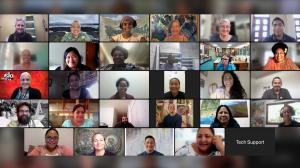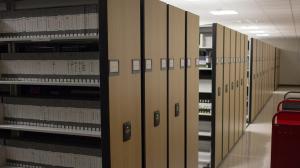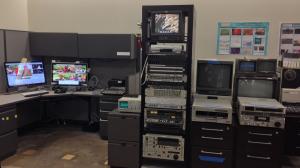New institute builds next generation of Indigenous museum professionals in the Pacific
University of Hawaiʻi at MānoaA new institute helping to develop early to mid-career Native Hawaiian and Pacific Islanders working in museums and cultural heritage centers launched its inaugural cohort of 20 individuals. Hosted by University of Hawaiʻi at Mānoa’s Department of American Studies, in partnership with the East-West Center (EWC), the institute was made possible by a $350,000 grant from the National Endowment for the Humanities in 2021.
Due to the COVID-19 pandemic, the 2021 in-person museum institute was postponed and was re-envisioned to include a six-month virtual program which began on January 24. It will culminate in a four-week in-person program, scheduled for July 2022 at the East-West Center.
“Weaving a Net(work) of Care for Oceanic Collections” focuses on three distinct but related areas: collections care, conservation and exhibition development. The Oceanic collections that these professionals care for tell important stories about Pacific peoples and their contributions to the world. Unfortunately, opportunities for professional development are few and far between, and even when they are offered, they do not often align with the needs, values and cultural practices of these diverse communities.
“The enthusiasm has been overwhelming, but we are most excited by the selection of our cohort, which represents the depth and diversity of our Oceanic communities,” Project Director Noelle Kahanu said. “We have folks from Lānaʻi, Hawaiʻi Island, Oʻahu, Guåhan, Saipan, American Samoa, the Marshall Islands, Palau, Samoa, Fiji, Kiribati, Aotearoa and Papua New Guinea. Our first virtual meeting took place across seven time zones!”
Nearly 50 years ago, in 1975, EWC held a training program to assist communities in “conserving their cultural heritage and maintaining their cultural identities.” More than a dozen participants from throughout the Pacific received six months of hands-on training in ethnomusicology, museology and archives management. Inspired by this history, UH Mānoa’s Department of American Studies approached EWC about offering something similar. Through consultation with the Pacific Islands Museums Association (PIMA), a new focus and format was developed.
“We are pleased that the National Endowment for the Humanities is supporting this collaborative partnership between UH, the EWC Arts Program, PIMA, and dozens of museums, cultural institutions, heritage sector professionals and other supporters across the Pacific,” said Peter Arnade, dean of the College of Arts, Languages & Letters.
EWC President and UH Mānoa alumna Suzanne Vares-Lum added, “Caring for and interpreting cultural collections honors the past and prepares us for the future. This type of professional network building strengthens real and lasting bonds across the Pacific, which is central to the East-West Center’s continued mission in the region.”
The 2022 Native Hawaiian and Pacific Islander museum cohort:
- Roldy Ablao, Pacific Island Ethnic Art Museum, Guåhan/California
- Archie Ajoste, Northern Mariana Islands Museum, Saipan
- Pamela Alconcel, Lānaʻi Heritage Center, Hawaiʻi
- Wilbert Alik, RMI Ministry of Culture and Internal Affairs, Marshall Islands
- Meked Besebes, Internal Affairs, Palau
- Michael Bevacqua, Guam Museum, Guåhan
- Mina Elison, Donkey Mill Arts Center, Hawaiʻi
- Nicole Duenas, University of Guam, Guåhan
- Ailini Eteuati, Ministry of Education, Sports and Culture, Samoa
- Regina Meredith Fitiao, Jean P. Haydon Museum, American Samoa
- Hoku Kaʻahaʻāina, ʻUluʻulu, UH West Oʻahu, Hawaiʻi
- Kirikara Koraua, Ministry of Internal Affairs, Kiribati
- Mereia Luvunakoro, Fiji Museum, Fiji
- Erlinda Naputi, Joeten-Kiyu Public Library, Saipan
- Erika Radewagen, Jean P. Haydon Museum, American Samoa
- Kuʻuleilani Reyes, Kamehameha Schools, Kapālama Campus, Hawaiʻi
- Elyssa Santos, Commission on Chamorro Language and the Teaching of the History and Culture of the Indigenous People of Guam, Guåhan
- Ruby Satele, Auckland War Memorial Museum, Aotearoa New Zealand
- Tyler Warwick, University of Guam, Saipan
- Tiko Waundu, PNG National Museum and Art Gallery, Papua New Guinea
For more information, contact nhpimi@hawaii.edu.



